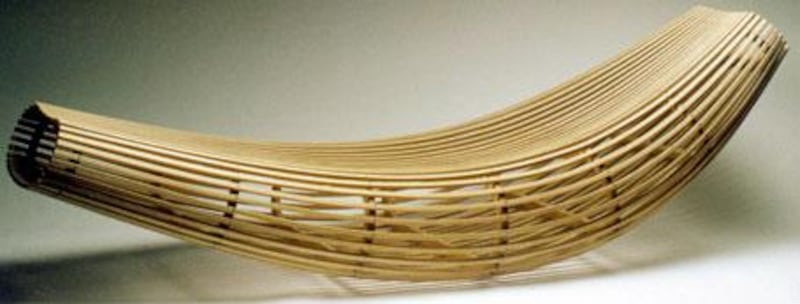Spending time in New Zealand, the home of Body Raft's designer, David Trubridge, reminds me forcibly of one of the past decade's most intriguing and beautiful pieces of furniture. This stunning recliner (rocking chair morphs into chaise longue) has been produced by Cappellini since 2001 when Trubridge, a British-born naval architect and yachtsman, who had taught himself woodwork and furniture design after sailing to New Zealand in the 1980s, showed its prototype at the Salone Satellite in Milan. Giulio Cappellini bought it for his private collection, secured the manufacturing rights and a furniture icon was born.
Whichever way you view it, its spare, sculptural form is at once light and strong, elegant and casual, sophisticated and natural, modern and timeless, familiar and strange. Viewed from the perspective of Trubridge's adopted country, it speaks of his passion for the environment and New Zealand's indigenous culture. In its form, it resembles both a sailor's hammock and a traditional waka puhara (canoe) of the Moriori, New Zealand's pre-Maori people. In its minimalist structure it epitomises Trubridge's philosophy of designing to use the minimum amount of material for the maximum amount of effect.
But, to my mind, Trubridge's own words sum up best why Body Raft is so special: "Significance lies, not just in the object but also in how it came to be, in the passionate urges behind it, and in the messages it imparts. The object is thus a vehicle for artistic communication." Available at Poltrona Frau, www.poltronafrau.it, approximately ?10,600 (Dh55,660).





